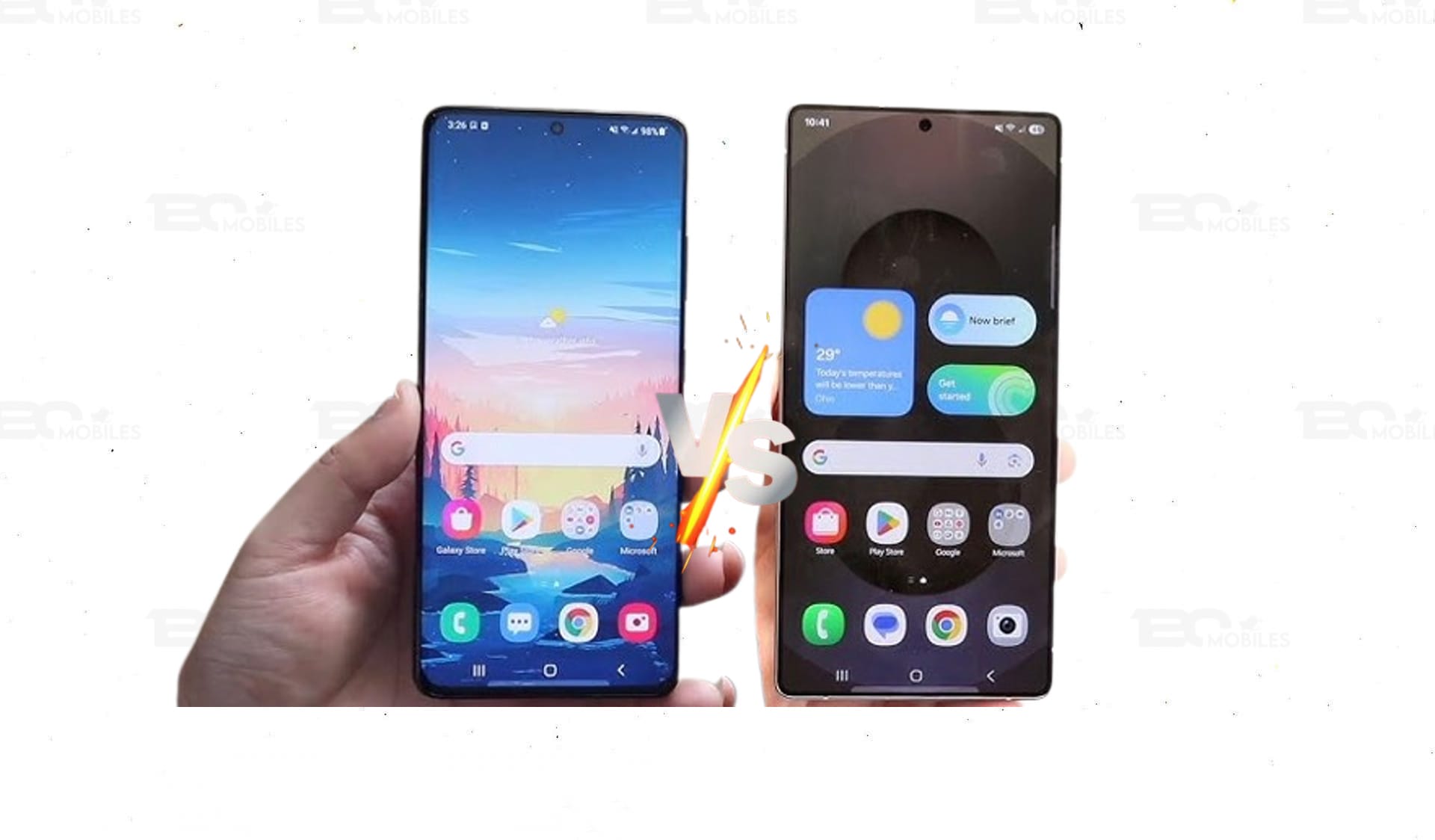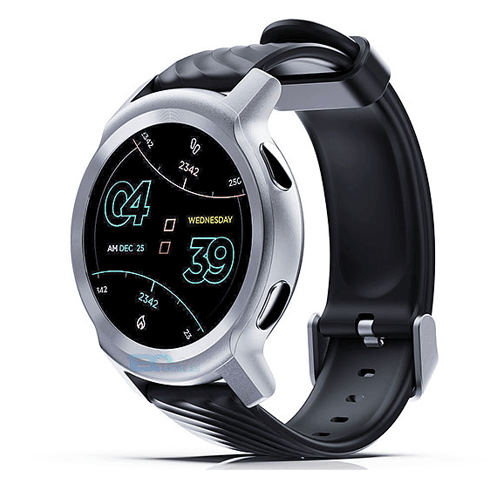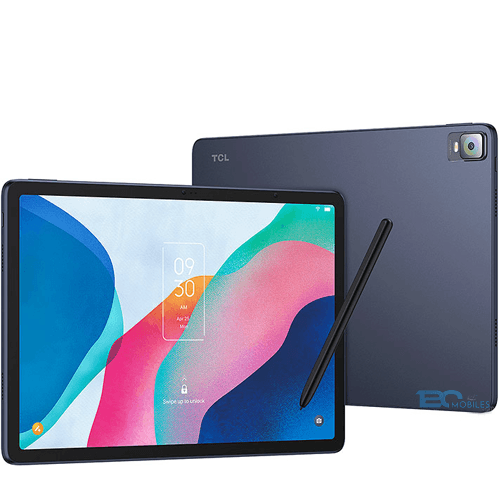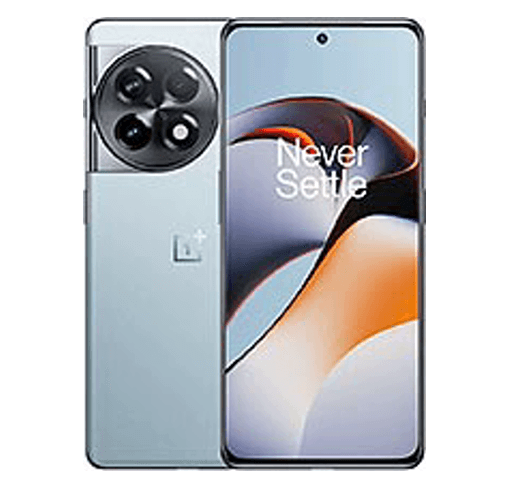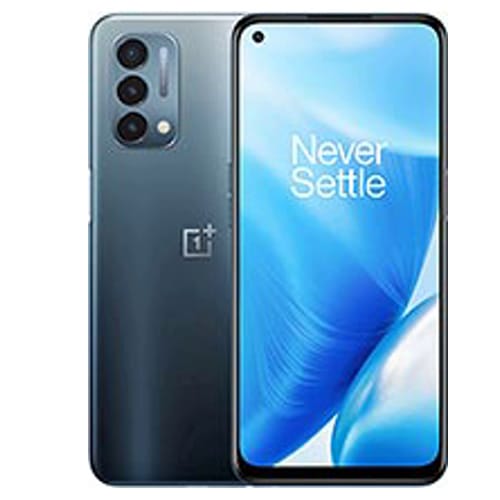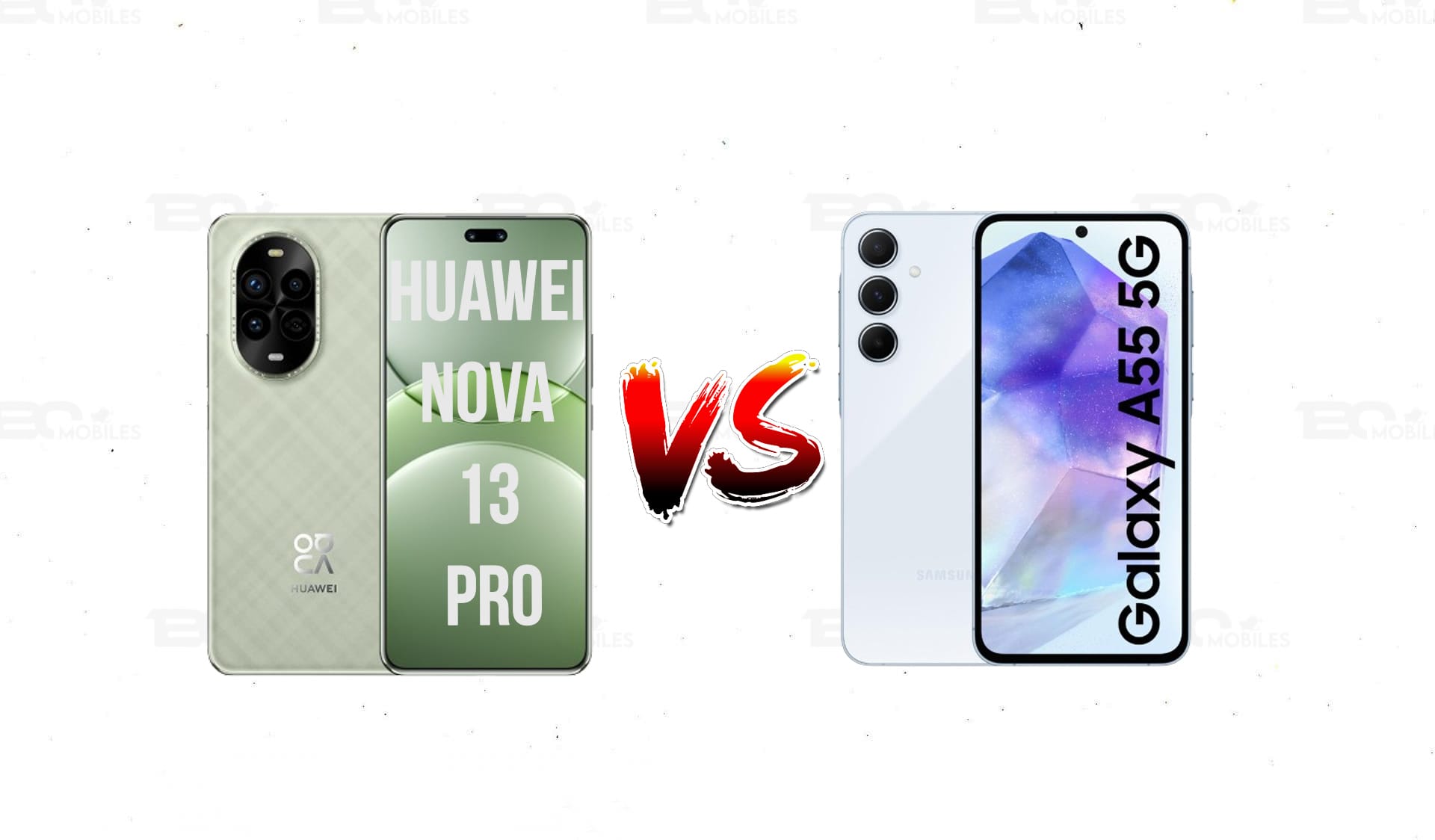Here’s a comprehensive comparison between the Samsung Galaxy S25 Ultra and the Samsung Galaxy S21 Plus:
Table of Contents
- Size Comparison
- Display Comparison
- Battery Life
- Charging Speed
- Speaker Test
- Performance
- Benchmark Performance
- Camera Comparison
- Video Quality
- Overall Verdict
📏 Size Comparison
| Feature | Samsung Galaxy S25 Ultra | Samsung Galaxy S21 Plus |
|---|---|---|
| Height | ~163.4 mm | 161.5 mm |
| Width | ~78.1 mm | 75.6 mm |
| Thickness | ~8.9 mm | 7.8 mm |
| Weight | ~234 g | 202 g |
| Display Size | 6.8 inches | 6.7 inches |
| Screen-to-Body Ratio | ~89% | ~87% |
| Build | Glass front & back, Titanium frame | Glass front & back, Aluminum frame |
🖥️ Display Comparison
| Specification | Galaxy S25 Ultra | Galaxy S21 Plus |
|---|---|---|
| Size | 6.9 inches | 6.7 inches |
| Resolution | 1440 x 3120 pixels | 1080 x 2400 pixels |
| Pixel Density | 498 ppi | 394 ppi |
| Refresh Rate | 120 Hz | 120 Hz |
| Peak Brightness | 2600 nits | 1300 nits |
| Display Type | QHD+ Dynamic LTPO AMOLED 2X | Dynamic AMOLED 2X |
🔋 Battery Life
| Feature | Samsung Galaxy S25 Ultra | Samsung Galaxy S21 Plus |
|---|---|---|
| Battery Capacity | ~5,000 mAh | 4,800 mAh |
| Charging Speed | 45W wired, 15W wireless | 25W wired, 15W wireless, 4.5W reverse wireless |
| Screen-on Time (SOT) | ~8-10 hours | ~6-8 hours |
| Battery Optimization | Advanced AI-based power management (expected) | AI-based power management |
| Processor Efficiency | Snapdragon 8 Gen 4 or Exynos 2500 | Exynos 2100 or Snapdragon 888 (5nm process) |
| Display Efficiency | Dynamic LTPO AMOLED 2X (1-120Hz adaptive refresh rate) | Dynamic AMOLED 2X (120Hz refresh rate) |
| Software Optimization | One UI 7 (expected, based on Android 15) | One UI 3.1 (upgradable to One UI 6, based on Android 14) |
| Standby Time | ~2-3 days | ~1.5-2 days |
| Real-World Usage | Expected to last longer due to larger battery and efficiency improvements | Good for moderate to heavy usage, but aging batteries may reduce performance over time |
⚡ Charging Speed
| Feature | Samsung Galaxy S25 Ultra | Samsung Galaxy S21 Plus |
|---|---|---|
| Battery Capacity | ~5,000 mAh | 4,800 mAh |
| Wired Charging Speed | 45W | 25W |
| Wireless Charging Speed | 15W | 15W |
| Reverse Wireless Charging | Yes | Yes |
| Charging Technology | USB Power Delivery 3.0 | USB Power Delivery 3.0 |
| Time to 50% | ~20-25 minutes | ~30 minutes |
| Time to 100% | ~60-70 minutes | ~75-80 minutes |
| Fast Charging Support | Yes | Yes |
| Adapter Included | Likely not | No (25W adapter sold separately) |
🔊 Speaker Test
| Feature | Samsung Galaxy S25 Ultra | Samsung Galaxy S21 Plus |
|---|---|---|
| Speaker Type | Stereo speakers (dual) with Dolby Atmos support | Stereo speakers (dual) with Dolby Atmos support |
| Speaker Placement | Bottom-firing + earpiece (hybrid stereo setup) | Bottom-firing + earpiece (hybrid stereo setup) |
| Audio Quality | Enhanced clarity, deeper bass, and improved spatial audio | Good clarity and bass, but less advanced spatial audio |
| Volume Levels | Louder and more balanced output | Loud but slightly less balanced at higher volumes |
| Dolby Atmos | Yes (improved tuning and wider soundstage) | Yes (standard tuning) |
| 3.5mm Headphone Jack | No | No |
| Bluetooth Audio | Bluetooth 5.4, improved codec support | Bluetooth 5.0, supports standard codecs (SBC, AAC, aptX) |
| Speaker Durability | Improved water and dust resistance (IP68 or higher) | IP68 water and dust resistance |
| Microphone Quality | Enhanced noise cancellation and voice clarity | Good noise cancellation and voice clarity |
| Audio Features | AI-based sound optimization, adaptive audio tuning | Standard sound optimization |
| Speaker Performance | Superior for gaming, movies, and multimedia consumption | Good for general use, but less immersive for multimedia |
🚀 Performance
| Feature | Samsung Galaxy S25 Ultra | Samsung Galaxy S21 Plus |
|---|---|---|
| Processor | Qualcomm Snapdragon 8 Gen 4 or Exynos 2500 (4nm) | Qualcomm Snapdragon 888 or Exynos 2100 (5nm) |
| CPU | Octa-core (1x Cortex-X5 + 3x Cortex-A7xx + 4x Cortex-A5xx) | Octa-core (1x Cortex-X1 + 3x Cortex-A78 + 4x Cortex-A55) |
| GPU | Adreno 750 (Snapdragon) or Xclipse 950 (Exynos) | Adreno 660 (Snapdragon) or Mali-G78 MP14 (Exynos) |
| RAM | 12GB/16GB LPDDR5X | 8GB LPDDR5 |
| Storage | 256GB/512GB/1TB UFS 4.0 | 128GB/256GB UFS 3.1 |
| AI Engine | Next-gen AI engine with improved NPU | 5th-gen AI engine with NPU |
| Cooling System | Advanced vapor chamber cooling | Standard vapor chamber cooling |
| Geekbench 6 (Est.) | Single-core: ~2,300; Multi-core: ~7,500 | Single-core: ~1,100; Multi-core: ~3,500 |
| AnTuTu Benchmark (Est.) | ~1,800,000+ | ~700,000 |
| 5G Modem | Integrated Snapdragon X75 or Exynos 5300 | Integrated Snapdragon X60 or Exynos 5123 |
| Wi-Fi | Wi-Fi 7 (802.11be) | Wi-Fi 6E (802.11ax) |
| Bluetooth | Bluetooth 5.4 | Bluetooth 5.2 |
| Operating System | Android 15 with One UI 7.0 | Launched with Android 11, upgradable to Android 14 |
| Performance Summary | Significant leap in CPU/GPU performance, AI, and efficiency | Solid performance for its time, but outdated compared to newer chipsets. |
📊 Benchmark Performance
GeekBench 6
| Specification | Galaxy S25 Ultra | Galaxy S21 Plus |
|---|---|---|
| Single-Core Score | 2788 | 1094 |
| Multi-Core Score | 10098 | 3721 |
Antutu 10
| Specification | Galaxy S25 Ultra | Galaxy S21 Plus |
|---|---|---|
| Total Score | 3,088,959 | 643,775 |
3DMark
| Specification | Galaxy S25 Ultra | Galaxy S21 Plus |
|---|---|---|
| Graphics Score | 21628 | 5,538 |
📸 Camera Comparison
| Feature | Samsung Galaxy S25 Ultra | Samsung Galaxy S21 Plus |
|---|---|---|
| Main Camera | 200 MP (f/1.7, 1/1.12″, PDAF, OIS) | 12 MP (f/1.8, 1/1.76″, Dual Pixel PDAF, OIS) |
| Ultra-Wide Camera | 48 MP (f/2.2, 120° FoV, 1/2.0″) | 12 MP (f/2.2, 120° FoV, 1/2.55″) |
| Telephoto Camera | 50 MP (f/3.4, 5x optical zoom, OIS) | 64 MP (f/2.0, 1.1x optical zoom, PDAF, OIS) |
| Periscope Telephoto | 10 MP (f/4.9, 10x optical zoom, OIS) | N/A |
| Front Camera | 40 MP (f/2.2, 1/2.8″, PDAF) | 10 MP (f/2.2, 1/3.24″, Dual Pixel PDAF) |
| Video Recording | 8K @ 30fps, 4K @ 120fps, HDR10+ | 8K @ 24fps, 4K @ 60fps, HDR10+ |
| Zoom Capabilities | Up to 100x Space Zoom (hybrid) | Up to 30x Space Zoom (hybrid) |
| Low-Light Performance | Enhanced AI-based night mode, larger sensor size | Decent low-light performance with Night Mode |
| AI Features | Advanced AI scene optimization, real-time object tracking | AI scene optimization, single take mode |
| Stabilization | Improved Super Steady mode, OIS on all cameras | Super Steady mode, OIS on main and telephoto cameras |
| Lens Quality | Gorilla Glass DX+ lens coating | Standard lens coating |
| Camera Software | One UI 6.1 with enhanced camera app features | One UI 3.1 with standard camera app features |
🎥 Video Quality
| Feature | Samsung Galaxy S25 Ultra | Samsung Galaxy S21 Plus |
|---|---|---|
| Max Video Resolution | 8K @ 30fps (possibly 8K @ 60fps with upgrades) | 8K @ 24fps |
| Stabilization | Advanced AI Stabilization + Super Steady Mode 2.0 | Super Steady Mode (1080p) |
| HDR Video Recording | HDR10+, Dolby Vision | HDR10+ |
| Slow Motion | 960fps @ 1080p, 480fps @ 4K | 960fps @ 1080p, 240fps @ 4K |
| Zoom in Video | Up to 20x Space Zoom (AI-enhanced) | Up to 10x Space Zoom |
| Low-Light Video | Enhanced Night Mode with AI for 4K/8K | Standard Night Mode for 1080p/4K |
| Audio in Video | Stereo Recording with 3D Audio, Wind Noise Reduction | Stereo Recording with Wind Noise Reduction |
| Front Camera Video | 4K @ 60fps with HDR10+ | 4K @ 60fps |
| AI Features | AI Scene Optimization, Auto Framing, Real-Time Editing | AI Scene Optimization |
| Video Formats | HEVC, H.264, ProRes | HEVC, H.264 |
| Bitrate | Higher bitrate for 4K/8K | Standard bitrate for 4K/8K |
🏆 Overall Verdict
✔️ Pros:
- Galaxy S25 Ultra:
- ✅Superior display with higher resolution and brightness.
- ✅Enhanced performance with the latest Snapdragon processor.
- ✅Advanced camera system with higher megapixel count.
- ✅Larger battery capacity with faster charging.
- Galaxy S21 Plus:
- ✅Lighter weight, making it more comfortable to handle.
- ✅Proven performance and reliability over time.
❌ Cons:
- Galaxy S25 Ultra:
- ❌ Heavier and slightly bulkier design.
- ❌ Higher price point.
- Galaxy S21 Plus:
- ❌ Lower display resolution and brightness.
- ❌ Less powerful processor and camera system.
- ❌ Slower charging speeds.

